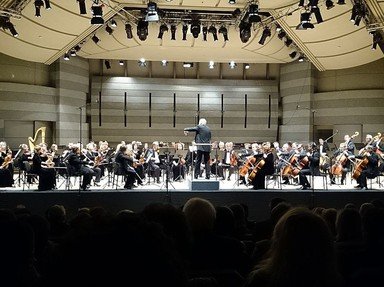
Orchestra Sections Trivia Quiz
Which Instrumentalists Sit Where?
A modern symphony orchestra uses instruments which can be grouped into sections, according to the way they are played and their tonal properties. This diagram shows a typical arrangement. Can you identify who performs where?
A label quiz
by looney_tunes.
Estimated time: 3 mins.
